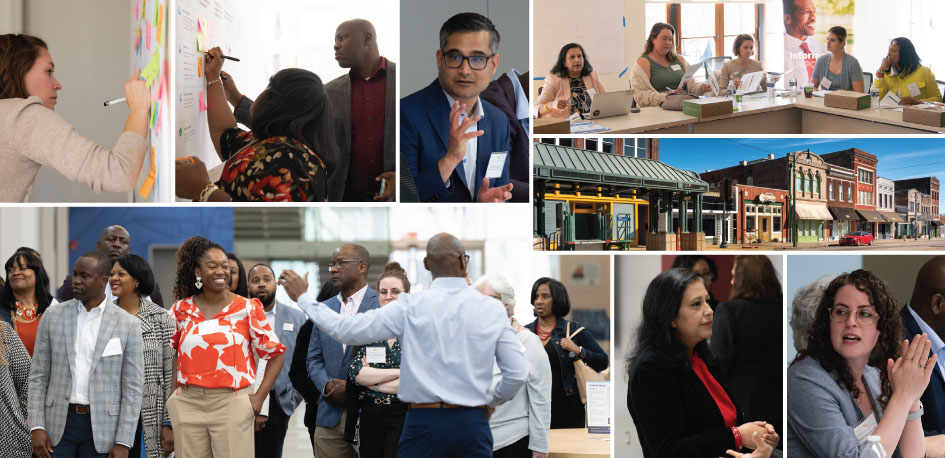About Us: Community Development
Community Development at the St. Louis Fed

We serve the Eighth Federal Reserve District (shaded). View a county-level map.
The Community Development department works across the Eighth District to enhance the St. Louis Fed’s understanding of how the economy is impacting low- and moderate-income (LMI) families and communities.
We accomplish this work by:
- Listening to consumers and workers in urban, suburban and rural communities throughout the region to better understand local economic conditions
- Conducting research and sharing data to help communities come up with strategies to grow their economies and make them more resilient
- Convening and connecting local stakeholders—including community banks, nonprofits and philanthropic organizations—to identify and address key challenges
These efforts help foster a strong economy and financial system so those in every community have opportunities to contribute to the economy and prosper.

Frequently Asked Questions
Community development is one of the Fed’s core functions as the U.S. central bank. The Fed’s community development work, which often focuses on lower-income populations, is an important responsibility rooted in its mandates from Congress. Community development research and outreach efforts help promote a healthy economy and financial system in which all can participate.
The Fed’s community development function arose from its responsibilities as a bank supervisor and regulator. As part of regulating and supervising banks, the Fed helps ensure that they comply with fair lending laws and the Community Reinvestment Act (CRA). Under the CRA, banks are required to help meet the credit needs of people and businesses in the areas where they operate, including low- and moderate-income (LMI) communities. Insights gained through community development research and outreach efforts also help inform Fed leaders tasked with making monetary policy decisions that support a strong economy. The Fed has been given the job by Congress to promote maximum employment and stable prices. To do this, the Fed needs to understand how the economy affects people’s lives, no matter who they are or where they live.
Under the Community Reinvestment Act (CRA), low- and moderate-income (LMI) communities are those that in certain geographies have income levels falling between specific ranges as determined by the U.S. Census Bureau. A low-income community is one in which the median family income is less than 50% of the area median income. A moderate-income community is one in which the median family income is at least 50% and less than 80% of the area median income.
Understanding how people experience the economy is important for effective policymaking. The Fed analyzes a wide range of quantitative data—including those describing differences in income, wealth and employment—to understand their economic implications. Real-time conversations with people in the community also help policymakers gauge what may be around the corner for the economy. Data coupled with insights from listening to community stakeholders can provide a more complete picture of economic conditions.
The 12 regional Reserve banks each tailor their community development activities to respond to the economic needs of the areas they serve. Community development staff at the St. Louis Fed examine a variety of issues that affect the economic outcomes of low- and moderate-income (LMI) people and neighborhoods. Examples include workforce development, revitalization efforts in rural Eighth District communities, access to credit and financial services, affordable housing and small business development. See our publications and reports page for more of the work we do.

